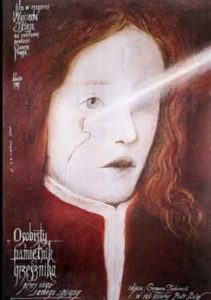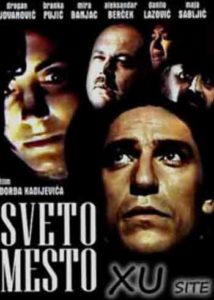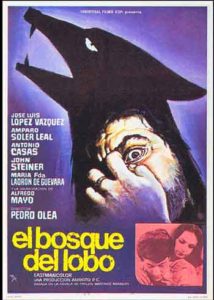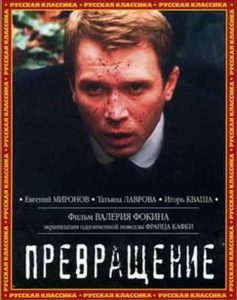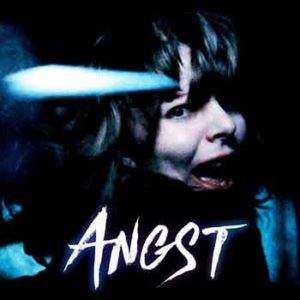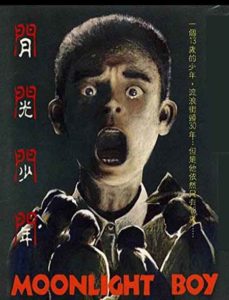The realities of American film distribution are often capricious, if not downright inexplicable. Take the ten foreign films listed below, all of which have worth, not to mention plenty of interest to horror fans, but have yet to be legitimately released in any format within the United States.
As one who’s viewed more than his share of unreleased horror movies, I can assure you there’s often a damn good reason distributors ignore films. That, however, is not the case with the following! Let’s hope U.S. distributors take note of these ten films, and soon, as all are required viewing for adventurous film buffs, be they horror fans or not.
10. MEMOIRS OF A SINNER [OSOBISTY PAMIETNIK GRZESZNIKA PRZEZ NIEGO SAMEGO SPISANY/JOURNAL INTIME D’UN PECHEUR] (1986)
The second-to-last film by Poland’s great Wojciech Has (of THE SARAGOSSA MANUSCRIPT and SANATORIUM UNDER THE SIGN OF AN HOURGLASS) was this opulent adaptation of James Hogg’s gothic classic. It concerns a dead man who, resurrected by a gravedigger, relates how he was encouraged by the Devil to kill his brother. This the man did, and later suffered severe reality dislocation as a malevolent double went about committing crimes in his name.
The whole thing is extremely slow moving and message heavy: like Hogg’s novel it’s concerned primarily with hypocrisy, specifically the concept of “justified” sin. Yet the film has a stunningly gothic look, and the second half, in which reality and hallucination become increasingly blurred, exerts a trippy fascination.
9. A HOLY PLACE [SVETO MESTO] (1990)
Serbian filmmaker Djordje Kadijevic’s made this horrific masterwork 17 years after his fabled vampire-themed TV movie LEPTIRICA. SVETO MESTO was based on Nikolai Gogol’s 1835 tale “Viy,” the source for Mario Bava’s BLACK SUNDAY (1960) and the Russian VIY (1967). As in the story and latter film, SVETO MESTO has an aspiring priest running into an undead witch. He’s charged with looking after her corpse inside a church for three nights, an unexpectedly arduous task that scares the Hell out of the poor guy and turns his hair white.
That’s all as in Gogol’s story, but Kadijevic adds much of his own, including a perverse subplot involving the witch woman’s father. Kadijevic also gives the gal more to do: when not terrorizing the protagonist in the church she’s out haunting the surrounding community in a variety of guises. There’s also a sexual angle far more blunt than in any other version of “Viy” (including the original story), which above all makes SVETO MESTO an extremely memorable film.
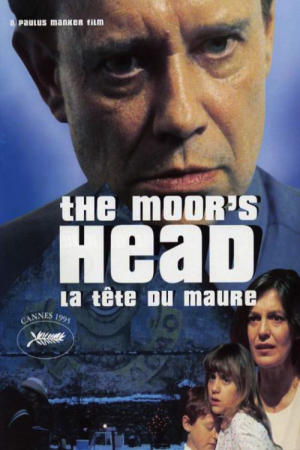 8. THE MOOR’S HEAD [DER KOPF DES MOHREN] (1995)
8. THE MOOR’S HEAD [DER KOPF DES MOHREN] (1995)
This profoundly disturbing Austrian production was scripted by the brilliant Michael Haneke (of FUNNY GAMES and CACHE), and if he’d directed it as well (as he apparently wanted to at one point) it would doubtless be a far stronger film. Not that THE MOOR’S HEAD isn’t extremely powerful in its present form, being the uncompromising account of a scientist (Gert Voss) who goes to pieces after learning of an accident at a chemical plant.
Determined to avoid the toxic gas he’s convinced is permeating the atmosphere, Voss creates a self-sufficient environment in his apartment, complete with edible crops grown under a sunlamp and several rabbits and birds. Eventually his wife and kids, who’ve been on a trip, return to face Voss’ handiwork…but by this point he can no longer discern what’s real and what isn’t. The final scenes are stunningly nasty and nightmarish, complete with a graphically depicted self-mutilation that all-but had me climbing the walls.
7. THE ANCINES WOODS [EL BOSQUE DEL LOBO] (1970)
This Spanish film contains an altogether unique and reality-centered take on the werewolf myth. Its focus is on Clinical Lycanthropy, an actual disease that causes the sufferer to periodically become a wolf-like homicidal maniac.
The Nineteenth Century set ANCINES WOODS is about one such afflicted individual, a tormented drifter (Jose Luis Lopez Vazquez) who enters a rural village where fear and superstition reign—and where Vazquez meets his bleak fate. An unusually strong and compelling film, with a protagonist who’s both menacing and sympathetic.
6. METAMORPHOSIS [PREVRASHCHENIE] (2002)
The finest film adaptation to date of Franz Kafka’s immortal METAMORPHOSIS. Directed by first (and thus far only) timer Valery Fokin, it’s impressively cinematic and admirably unshowy in its approach, while remaining entirely faithful to Kafka’s text (a somewhat gratuitous 20 minute prologue aside). It also contains a formidable lead performance by Yevgeny Mironov, who conveys his transformation into a giant insect entirely through bodily contortions, with no special effects of any sort.
5. ANGST [SCHIZOPHRENIA] (1983)
I don’t know that I like the German ANGST very much (as my review indicates) but can’t deny that it’s one of the most vital and innovative horror films of the past 30 years. It’s also positively skin-crawling in its reality-based portrayal of the grisly doings of a serial killer. This freak, played by Erwin Leder, has just been released from a mental hospital, and wastes no time breaking into a suburban home—where he methodically toys with and brutally massacres the family residing therein.
This nerve-shredder of a film is every bit as gruesome as it sounds, with unnervingly graphic bloodletting and an uncomfortably convincing performance by Leder. Yet the proceedings are also bold and dazzling, utilizing a specially invented camera mount in service of amazing and unprecedented moving POV shots that must be seen to be believed.
4. MOONLIGHT BOY [YUE GUANG SHAO NIAN] (1994)
This Taiwanese film’s placid and subdued aura of muted disquiet is like nothing else. It features a ghost boy dispassionately wandering the nighttime streets of Taiwan, and periodically drifting into a hallucinatory realm where the dead walk and cartoons interact with flesh-and-blood humans.
Critics like to describe this film as a metaphoric political commentary on Taiwan in the nineties. Perhaps that’s true, but I prefer to view MOONLIGHT BOY as a straightforward—if unusually layered and complex—ghost story.
3. ATRAPADOS [TRAPPED] (1980)
This American-made Spanish language production, directed by Matthew Patrick (of the Gary Busey vehicle HIDER IN THE HOUSE), should be a fixture of cult movie buffs everywhere. ATRAPADOS was apparently quite popular on the early-1980s festival circuit, and received rave reviews from several top critics. Yet the film failed to receive the distribution deal it seemed to be building toward, and within a few years was completely forgotten (it’s currently not even listed on the imdb). I find that last point especially puzzling, as forgettable is definitely not a word I’d use to describe this film!
It’s a deceptively simple account of an unidentified catastrophe that befalls a man and woman, who wind up trapped in her tiny basement apartment—where both eventually expire. That description accurately sums up the narrative, but woefully fails to convey the richness and bizarrie of ATRAPADOS, which in its all-encompassing mood of surreal oppressiveness plays like a coherent ERASERHEAD. The lightless, sealed-off space where the majority of the action takes place, visualized entirely through different tints of black and white, becomes a profoundly strange and otherworldly universe unto itself, and results in a film as haunting and mind-expanding as nearly any I’ve seen.
and results in a film as haunting and mind-expanding as nearly any I’ve seen.
2. THE LAST FRANKENSTEIN [RASUTO FURANKENSHUTAIN] (1991)
This Japanese stunner is perhaps the most audacious horror movie of the nineties, yet it’s been largely ignored—even in its home country,
An incredibly intricate, feverishly inventive film, THE LAST FRANKENSTEIN takes the raw materials of Mary Shelley’s classic tale, as well as some elements borrowed from Paul Morrissey’s FLESH FOR FRANKENSTEIN, and twists them into a wholly unique science fiction tinged epic. In truth the results probably shouldn’t work, yet they do, and smashingly well.
1. IN THE MIDST OF LIFE [AU COEUR DE LA VIE] (1963)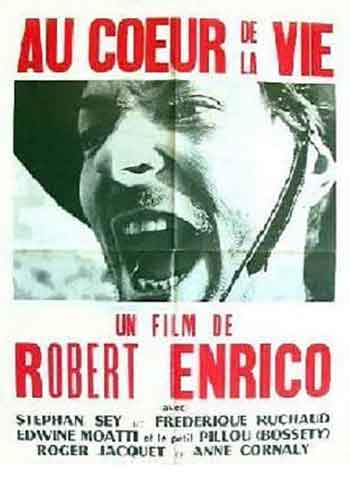
Not merely a neglected horror movie, but one of the great unknown masterpieces of world cinema.
A French made anthology based on three Ambrose Bierce Civil War stories, IN THE MIDST OF LIFE had the misfortune to appear in the early days of the French cinema New Wave of the 1960s, wherein its pastoral beauty and Val Lewton-esque air of poetic horror seemed out of place. For some reason the film was cut up, with one of its segments, “La Riviere du Hibou” (based on Bierce’s “An Occurrence at Owl Creek Ridge”), released as a standalone short. As such it won an Academy Award, was packaged as an episode of THE TWILIGHT ZONE and eventually turned up on DVD. About the bleakly ironic fate of a condemned soldier who miraculously escapes his execution (or at least seems to), it’s an undeniably powerful film, but was intended as part of a greater whole.
IN THE MIDST OF LIFE’S other segments include “L’Oiseau Moqueur” (adapted from Bierce’s “Mockingbird”), a darkly evocative mood piece about a soldier discovering that a man he’s just shot is his long-lost twin brother, and “Chickamauga,” in which a young boy frolics among an army of zombie soldiers. Taken as a whole the film is an overwhelming experience, and a cinematic relic that MUST be rediscovered!

